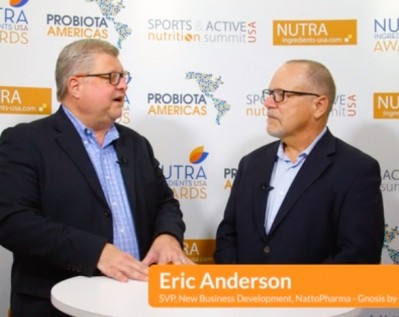Study: Vit K2 could reduce heart health risk in nicotine users

The Netherlands and Germany conducted the current study to investigate the effects of nicotine on initiation of vascular smooth muscle cell (VSMC) calcification and examined vitamin K2 as a potential therapy.
The researchers assessed vascular calcification of human carotid lesions of both smoking and non-smoking patients using ex vivo micro-computed-tomography (µCT)-scanning. Calcification was present more often in carotid plaques of smokers compared to non-smokers, confirming a higher atherosclerotic burden.
The difference was particularly profound, according to researchers, “for microcalcifications, which was 17-fold higher in smokers compared to non-smokers. Using induced human primary VSMC in vitro, nicotine increased osteogenic gene expression (Runx2, Osx, BSP and OPN), extracellular vesicle (EV) secretion and subsequently increased calcification.”
The researchers found the pro-calcifying effects of nicotine were mediated by the free radical producing Ca2+-dependent Nox5. SiRNA knock-down of Nox5 inhibited nicotine-induced EV release and calcification.
Additionally, the study showed that Nox5 expression was higher in carotid arteries of smokers and correlated with calcification levels in these vessels. Finally, pre-treatment of hVSMCs with vitamin K2 ameliorated nicotine-induced intracellular oxidative stress, EV secretion, and calcification.
"In this study we show that smokers are at increased risk of cardiovascular events and that smoking impacts cardiovascular disease by increasing oxidative stress resulting in accelerated vascular calcification,” says Prof. Schurgers, Professor of Biochemistry of Vascular Calcification and Vice-Chair of Biochemistry at the Cardiovascular Research Institute Maastricht (CARIM), Maastricht University, and corresponding author to this paper. “We show that vitamin K2, next to its well-known function as a cofactor in the activation of vitamin K-dependent proteins, also is an effective antioxidant capable of reducing oxidative stress.”
The researchers also noted that nicotine is the primary agent in both cigarettes and e-cigarettes. These findings add to the current literatures that vaping may not be a healthier choice when it comes to vascular health.
The study that was completed with the support of NattoPharma, as partner within the European Union’s Horizon 2020 research and innovation programme under the Marie Skłodowska-Curie grant INTRICARE.
Through the Horizon 2020 grants awarded, in which CARIM is coordinator and one of the beneficiaries, in partnership with NattoPharma, the company has hosted PhD students (ESRs) to teach them about the food and supplement industry and foster further understanding of the RDI values set by FDA/EFSA. Dr. Petsophonsakul, lead author on this paper, was one of those ESRs.
“We have been working with Maastricht University for almost two decades validating the health benefits of vitamin K2, creating this category,” says Dr. Hogne Vik, Chief Medical Officer at NattoPharma.
“Our work, in addition to others’, is building the necessary body of evidence required to convince regulatory bodies how essential vitamin K2 is for the betterment of global human health. And this new study adds to our current pursued argument that vitamin K2 can have a tremendous impact as a cardiovascular therapy – not only in healthy populations, but in patient or unhealthy populations, like nicotine users.”
Source: Cardiovascular Research
Petsophonsakul P, Burgmaier M, Willems B, Heeneman S, et al.
“Nicotine promotes vascular calcification via intracellular Ca2+-mediated, Nox5-induced oxidative stress and extracellular vesicle release in vascular smooth muscle cells.”
doi: 10.1093/cvr/cvab244








